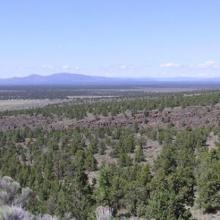Eastern Oregon Agricultural Research Center: Burns

Implementation
Once the NEPA process concludes with a final EA or EIS and a decision by the agency, the process is over. Typically, the proposed action in the EA or EIS becomes the basis for the Allotment Management Plan for a term grazing permit renewal or the project plan for a range improvement. A final decision related to an EA for the US Forest Service is called a Decision Notice. For the BLM, the final decision is referred to as a Decision Record. If an EIS is required, the final decision for both agencies is called a Record of Decision.
Though the NEPA process for your grazing permit and range improvement has concluded, the process is not really over. You should continue to engage with agency staff to maintain strong relationships. You should also work with agency staff to implement and maintain a monitoring program to track the impacts and outcomes of the decision. Because most BLM and US Forest Service decisions now include adaptive management, monitoring will provide you with the data you need to adjust over time and improve management outcomes without the need for a new NEPA process. In addition, maintaining relationships and monitoring will make the next NEPA process easier for you and the agency.
Appealing a Decision
If you do not submit comments during the NEPA process, for example when an EA is published but before the final decision, or when a draft or final EIS is made available for public comment before a final decision, you are not eligible to appeal. Participating in the NEPA process throughout is critical to maintain your ability to appeal once a decision is made. In addition, if you are participating in the process throughout, it is much more likely the final decision will fit with your management goals. The best option in the appeals process is to not be in a position where an appeal is needed in the first place.
The appeals process is complex. Appeals follow different procedures depending on if you are appealing a US Forest Service or BLM decision. Detailed instructions on the appeals process are available in the NEPA for Ranchers Handbook and the Federal Appeals Handbook: Guidance for Appealing Grazing Decisions. Both of these resources are available below, from the Arizona Cooperative Extension website, and at Cooperative Extension offices.
Relationship to Other Laws
Regulations for managing public lands come from other laws, notably the Federal Land Management and Policy Act, the National Forest Management Act, the Public Rangelands Improvement Act, and the Multiple Use Sustained Yield Act. When agencies implement these laws, for example by writing an Allotment Management Plan and issuing a new term grazing permit, NEPA is triggered because the implementation is a federal action. The NEPA process is used to review the impacts of the Allotment Management Plan and issuance of the grazing permit.
The Endangered Species Act interacts with NEPA in a similar way. It is particularly important because the presence of a threatened or endangered species on a grazing allotment can cause the NEPA process to shift from the shorter EA process to the longer and more detailed EIS process. There is nothing ranchers can do to avoid this, but there are things you can do to participate in the process. The Ranchers Guide to NEPA provides detailed information about how to participate in the NEPA process when endangered species are involved.